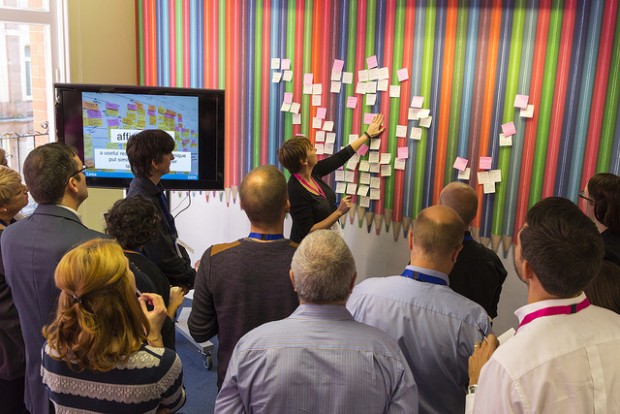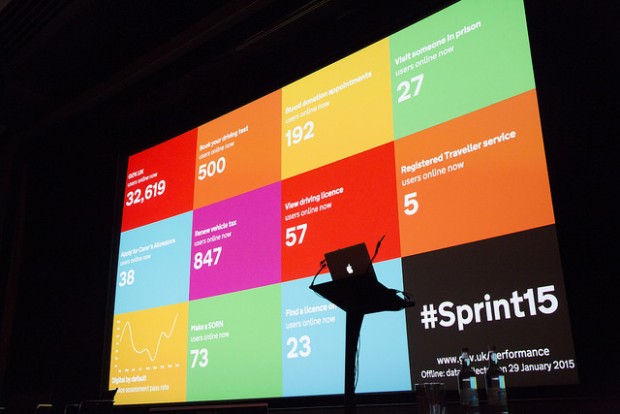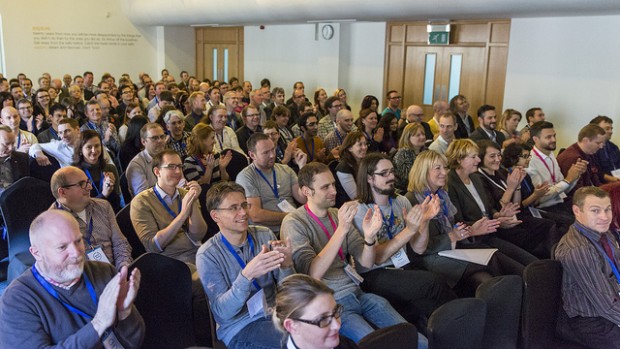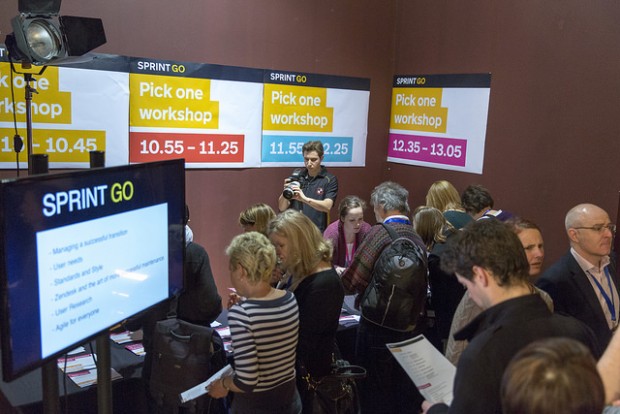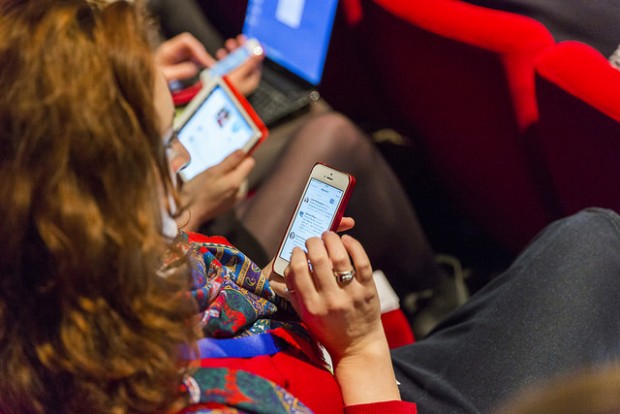At GDS, our events are an integral part of our strategy for communicating and engaging inside government, and to the public. With audiences of 50 to 600, we push to provide an event experience and content on par with the best of government and the private sector.
I’ve worked in events for 11 years, predominantly in the public sector, before joining GDS as Head of Events, where I’ve run events in central government for the past 2 years.
Having worked in both the private and public sectors, I’m experienced in managing the challenges that producing events of all shapes and sizes entails.
‘Show the thing, share the story’
GDS is agile from the ground up. Keeping that kind of pace, without sacrificing quality, is a challenge to any large organisation - and even more so in the public sector.
GDS spans many departments and sites, providing a wide variety of services; so our team members have very different viewpoints and needs. From developers concerned with performance, reliability, and security; to our designers who focus on usability and accessibility; to our leadership, concerned with strategic direction and return on investment.
Communication is critical for us to work effectively, particularly across these different functions, office sites, and departments.
It’s also important for us to communicate what we do to people outside of GDS, and engage across government and the technology sector. We want to help the rest of government improve their digital services, publicise the work we’ve done to our end users, and learn new practices and trends outside of government, so we can continue being innovative.
Our events programme is how we make sure that the work GDS does is showcased in a way that is accessible to all - from tech press and journalists, to members of the public and colleagues across government.
The twice yearly Sprint events, most recently Sprint 15, are the best known of these events. They’re also the best attended - in terms of numbers (with 500+ attendees) and variety (with attendees from all over government, including ministerial presence).
Let our work speak for itself - clearly
It’s important that the technology and tools never get in the way of the important message we need to deliver to our audience.
Our use of digital registration systems helps attendees sign up easily, find out more information about the event schedule and location, and get settled in the right talks for them on the day. Our on-hand experts ensure that any problems with WiFi, corrupt slideshow files, or lost cables won’t stop the show.
We make sure the platforms we use to present our work are on-point with GDS style - simpler, clearer, faster. Our stands, banners, and flyers all strive to communicate the messages and topics of the event quickly and effectively.
Putting your digital foot forward
The world of events is a thriving industry which is continually growing and developing.
As this happens, the focus on digital and the way we communicate and execute events is increasing.
GDS is no exception, and the great thing about running events here is the huge skill set of people with user focused ideas and fresh ways of communicating.
Knowing your audience
At GDS our event objectives are very similar to running an event in the commercial events arena. However, the delivery can be widely different. GDS public events are about sharing a message to the wider public. It’s about showing public services and sharing the journey, not selling a brand or product.
Our audience is everyone. So, we have to make sure the information we’re sharing is accessible by a wide range of people, not just a niche target audience.
The same goes for our content. We need to ensure variety and diversity in our speakers and their talks so that we connect with, and better represent, both the audience and the general public that use our services.
Inside and out
As well as external events, we run a number of internal events for GDS staff and other government departments. These events cover subjects like strategy planning; idea sharing and updates mid project; problem solving; agile approach; and final delivery.
Whatever the subject, there is real value in bringing together teams to collectively approach projects as a full team (teams are not always located in the same geographical place).
Ensuring everyone’s included, supported, and listened to. Feedback shows that these internal events result in a high quality of output, and a better working environment.
Collaboration and crowdsourcing
Be it crowd sourcing our agendas, making the most of social media, or using multimedia and new conference approaches (like unconferences); we like to plan our events as part of a conversation with attendees.
For our events programme, we use tech tools, social media integration, and crowdsourcing to create our events in a more collaborative way. This helps us engage with attendees and makes sure our content, presentation, and overall experience is a perfect fit for the audience.
Connecting with our audience and having the platform to create their own learning experiences which also works on the side of the events producer. Working in this way makes it easier for attendees to network through our online communities and event tools pre- and post-event.
Collaboration with our audience should always start well in advance of an event, so we have conversations with our users to ensure we’re providing the right content, in the right format.
We continue that conversation throughout the event on social media, and the real-time feedback this provides us helps us tweak and troubleshoot the event at the earliest opportunity.
After the events, we can do even deeper analysis and we can use this feedback to build the next events.
This collaborative approach means we can tailor our message to our audience, and be constantly learning and iterating.
Audience collaboration before the event, ideas and content sharing, and speaker suggestions can all be shared with our existing online communities. Their opinions, requests, and suggestions are then fed back into the event - helping to tailor and deliver the event with the greater understanding of your audience and their values.
Moving forward
Using these approaches, our event strategy and execution has come on leaps and bounds in the last few years. Using these learnings, and tightening our feedback loop to continually improve, will allow the rest of our events programme in 2015, including the next sprint events, to build the relationships, refine the goals, and perfect our plans so GDS can enable our users even more.
Follow Natalie on Twitter, and don't forget to sign up for email alerts.
